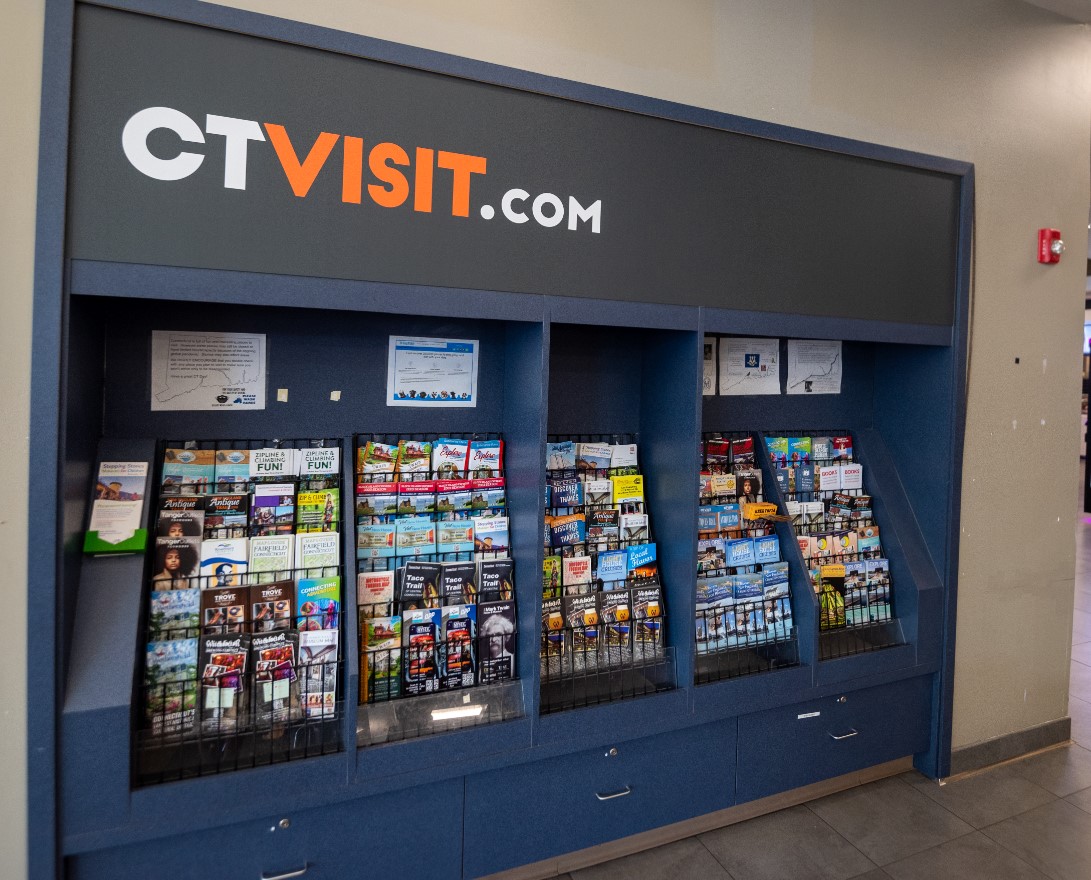
One of the most successful distributors of print media is headquartered in Stamford, and their B2B business model delivers targeted marketing material right into the hands of people actively seeking it out through brochure stands and interactive information kiosks in transit stations, hotel lobbies, and other spaces throughout the Eastern U.S. and Canada.
“Our focus is on helping visitors to a travel destination find out what to do next, what authentic, local fun things there are,” said Peter Magaro, the president of CTM Media Group since 2005. “We try to get them that information through an array of media through interactive digital screens, visitor guides, traditional paper brochures, small format cards that can easily go in a pocket. Really any way that somebody wants to consume the information we just want to provide it to them.”
The company, which is celebrating 40 years in business this year, began as “Creative Theater Marketing” in a small office in Manhattan’s East Village. The startup originally focused on distributing brochures in the somewhat grittier Times Square of 1983.
“The founders of the business were trying to find ways to market Broadway shows to travelers and tourists,” Magaro said. “What they found was that the hotels were eager for information to share with their guests about what was going on around the city.”
Cricket Hooper Jiranek, currently the vice president of sales for CTM, started with the company 38 years ago and recalled the company’s humble beginnings.
“We had a little kiosk in the Times Square area where we displayed and distributed brochures just for Broadway shows, then we expanded from there,” Jiranek recalled. “Once we got our feet on the ground and placed a brochure display stand in the Times Square hotels. From there all the local attractions who had always printed brochures like the Empire State Building, or the Bronx Zoo or the Metropolitan Museum of Art started seeing our brochure displays and we would get calls. “We just kind of went, ‘Is there a business here, an opportunity here, that we aren’t aware of?'”
Now, decades later, Jiranek said it remains an exciting and unique business though it can pose some challenges in social settings.
“We are an under the radar business that nobody knows is really a business, which makes it fun,” she said with a laugh. “At a cocktail party people say what do you do and when you try to explain you have to ask if they want the ten second version or the two-hour version.”
Prior to CTM’s early kiosks, these brochures were typically left with the front desk of hotels, according to Jiranek. Visitors may not know that they were available, and delivering the brochures along with gauging how many were needed was not a task even tourist dependent businesses typically hired a dedicated employee to handle.
CTM kiosks are generally an amenity free for a location to host, dispensing valuable information at no cost to travelers. CTM’s customers are the companies that want their brochures and pamphlets distributed. The customers are responsible for printing the materials, but CTM will warehouse and distribute the materials as well as provide insights into how many brochures are being taken during replenishment.
Mark Layton is the director of regional operations for CTM and works out of the warehouse associated with the company’s Stamford corporate headquarters. He has been with the company for 12 years and his focus is on kiosks throughout Eastern Connecticut.
“The volume of print we go through is astounding,” Layton said, noting that it was on par with what he saw working in traditional magazine distribution before starting with CTM. “Our brochure stands are all along I-95 and I-91 in Connecticut. Starting from Greenwich, we’re on the Merritt at the first gas station you’ll hit when you enter the state.”
“We have a great relationship because they have two giant brochure stands,” Layton continued, “In these summer months, once the children get out of school from May until September they get absolutely destroyed, people take a lot of brochures and a lot of magazines.”
Layton noted that some locations can go through brochures so fast it requires the daily attention of one of the company’s uniformed visitor information specialists during busy seasons. But that volume doesn’t surprise him.
“I’m a father of two, so I know what it’s like to be on a vacation far away and wonder, “Where am I going to take these kids today?’ So, this business model really works out,” Layton said.
However, Magaro doesn’t give all of the credit to the business model, strong though it may be , he acknowledged CTM’s growth was fueled in part by acquiring other companies doing similar work over the years.
“What’s been the most important thing for us as far as our success?” Magaro mused. “It’s our people. We’ve got really great, talented people who have been with us, and we’ve had the good luck
of having people that stayed with us for a very long time. That’s what makes us successful.”



















